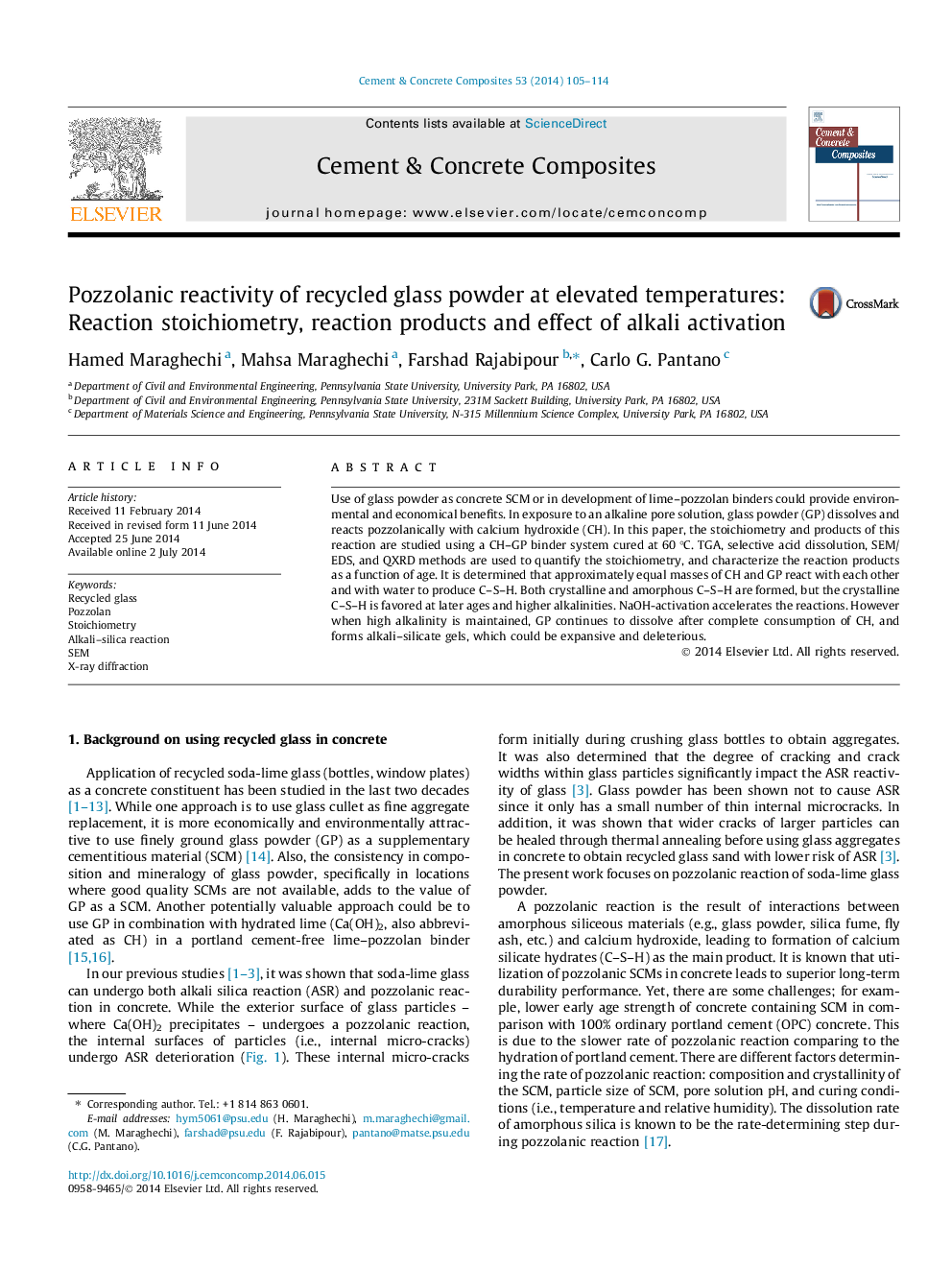| Article ID | Journal | Published Year | Pages | File Type |
|---|---|---|---|---|
| 1454548 | Cement and Concrete Composites | 2014 | 10 Pages |
Use of glass powder as concrete SCM or in development of lime–pozzolan binders could provide environmental and economical benefits. In exposure to an alkaline pore solution, glass powder (GP) dissolves and reacts pozzolanically with calcium hydroxide (CH). In this paper, the stoichiometry and products of this reaction are studied using a CH–GP binder system cured at 60 °C. TGA, selective acid dissolution, SEM/EDS, and QXRD methods are used to quantify the stoichiometry, and characterize the reaction products as a function of age. It is determined that approximately equal masses of CH and GP react with each other and with water to produce C–S–H. Both crystalline and amorphous C–S–H are formed, but the crystalline C–S–H is favored at later ages and higher alkalinities. NaOH-activation accelerates the reactions. However when high alkalinity is maintained, GP continues to dissolve after complete consumption of CH, and forms alkali–silicate gels, which could be expansive and deleterious.
